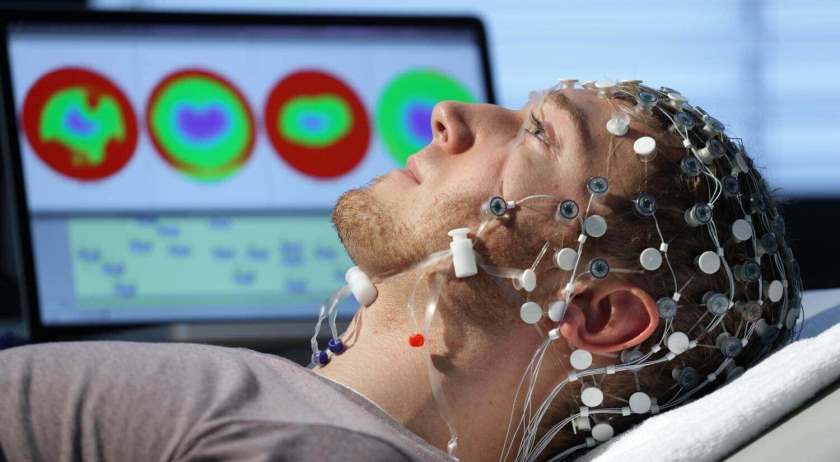

Occasionally, additional electrodes will be used. Electrodes will be place on the outer portion of your eye area to record eye movements. Electrodes will be placed on the upper chest/shoulder area to record your heart rhythm (EKG) as well. At this time the technician/technologist will also measure the contact between the electrode and scalp. The electrode discs will be attached with a conductive paste and piece of gauze, cotton or special tape. The technician/technologist will then rub a gel on your scalp that feels rather gritty or scratchy at each electrode location as this step helps the electrodes make a good connection with the scalp. You will be lying down on a table and we will try to ensure that you are comfortable and warm. This pencil will come off after the testing. This insures that the electrode placement is accurate. The technician/technologist will measure and mark you head with a grease pencil. This helps them to convey that information to the interpreting physician and may aid in the interpretation and diagnosis. The technician or technologist may ask you some questions about your history of symptoms, your handedness. However, it is not necessary to stay awake all night unless otherwise instructed. If you normally get 8 hours of sleep at night, try not to get more than 6. Try to get a few hours less of sleep the night before testing as we would like you to be a little tired.You are encouraged to eat your meals prior to EEG procedures.Refrain from having caffeine the day of your test.Please have clean, dry hair with no hair products, particularly oils.This type of testing is most often used in the diagnosis of seizures or epilepsy, headache, memory disturbances, stroke, spells, syncope (fainting) and other neurological symptoms. Our EEG’s are recorded using the American Clinical Neurophysiologic Society (ACNS) guidelines and the International 10-20 System of Electrode Placement.ĮEG testing is ordered for a number of neurological disorders. The EEG is different than an MRI or CT scan as those tests show physical structures of the brain or spine and the EEG records the physiologic portion or electrical connections of the brain. The EEG specifically measures the voltage difference resulting from ionic current within the neurons in the brain. This activity shows up as wavy lines on an EEG recording. Your brain cells communicate via electrical impulses and are active all the time, even when you’re asleep. An electroencephalogram (EEG) is a non-invasive diagnostic test that records the electrical activity in your brain using small, flat metal discs (electrodes) attached to your scalp.


 0 kommentar(er)
0 kommentar(er)
